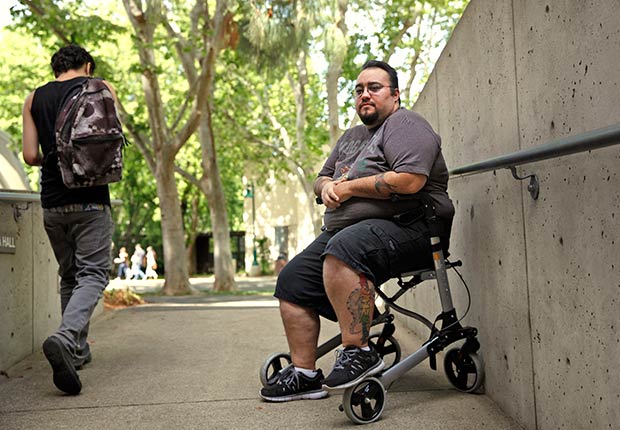AARP Eye Center

By Rita Beamish
Even before 3.4 million Californians joined Medi-Cal last year under the Affordable Care Act, the state boasted the behemoth of state health insurance programs.
Medi-Cal is California’s version of Medicaid, the health care safety net for low-income and disabled residents that marks its 50th anniversary in July.
Thanks to a massive 16-month growth spurt, Medi-Cal now provides health services for more than 12 million people, almost a third of all Californians. Medi-Cal insures more people than the populations of all but six states.
The current $95.9 billion cost for Medi-Cal includes $61 billion in federal funds. The federal government pays the full cost of covering those added by the expansion, but its share will decline to 90 percent by 2020.
Medi-Cal also covers several million people who have higher household incomes than the federal cutoff, including pregnant women, children, the disabled, older people, nursing home residents and those eligible for nursing homes.
“It’s not your grandmother’s Medi-Cal anymore. It’s now a safety net for the rest of us, not just for certain categories of children and seniors and people with disabilities,” said Anthony Wright, executive director of Health Access, a policy and patient advocacy group. Still, he said, “It needs significant improvement to be the coverage that we want all Californians to have.”
Growing pains have accompanied Medi-Cal’s 30 percent expansion since early 2014; by comparison, there’s been a 19 percent increase in Medicaid enrollees nationwide. An enrollment backlog grew to 900,000 applications but has been virtually cleared, officials said.
The rapid growth has also intensified concerns about caring for the huge patient load. Advocates for the poor cite out-of-date provider directories; recession-era cuts in eye care, podiatry and other services; and difficulties in gaining access to doctors.
Inconsistent care
Medi-Cal is continuing its landmark shift from a traditional fee-for-service model to managed care contracts, which now cover 80 percent of enrollees. But that doesn’t ensure consistent quality. The wide variation among health plans is “astounding,” said Chris Perrone, director of improving access at the California HealthCare Foundation.
The foundation’s surveys have found that many doctors would not accept new Medi-Cal patients. One reason is that Medi-Cal reimbursement rates are among the lowest in the nation, critics say. Enrollees have a harder time getting appointments than other insured Californians, particularly with specialists.
Mari Cantwell, chief deputy director for health care programs at the California Department of Health Care Services, said officials don’t see a problem yet, but they are monitoring reports about lack of access. “We are concerned when we hear the anecdotal stories,” she said.
Her department is finalizing plans to improve quality of care and cost savings and to provide financial incentives to encourage physicians to accept more Medi-Cal patients.
“It’s really about providing the right services people need when they need them and in the best possible setting to receive them,” she said.
The experiences of Kevin West, 29, a student at California State University, Sacramento, illustrate the ups and downs of Medi-Cal.
He said he had to drive 45 minutes to the nearest psychiatrist who would accept Medi-Cal insurance and prescribe his bipolar medications. West was told later that the psychiatrist no longer took Medi-Cal. He now sees his primary care doctor for the meds.
Then, within months of enrolling last year, he landed in the hospital and was diagnosed with multiple sclerosis, which means a future of large medical bills.
“I am a student with less than $1,000 a month disability income. I couldn’t afford the hospital costs alone,” West said. “Medi-Cal is literally saving my life.”
Rita Beamish is a writer living in San Mateo.























































